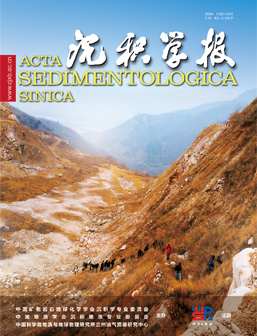Control of Restrictive Topography in the Bohai Strait on Modern Sedimentary System Distribution
doi: 10.14027/j.issn.1000-0550.2024.129
- Received Date: 2024-10-24
- Available Online: 2025-03-04
-
Key words:
- Bohai Strait /
- tidal deposition /
- strait deposition /
- sedimentary dynamics simulation /
- Regional Ocean Modeling System
Abstract: [Objective] The formation of sedimentary systems within straits is intricately linked to the unique topographical constraints that influence both facies characteristics and sediment distribution patterns. While current research on shallow-water strait sedimentation focuses primarily on narrower straits (less than 50 km wide) dominated by tidal processes, wider straits present more complex dynamics. This study investigates how the Bohai Strait, a shallow strait with a width of 106 km, utilizes its unique topography to influence the distribution of modern sedimentary systems. [Methods] An extensive dataset of surface sediment grain sizes, combined with four shallow seismic profiles, was used to characterize the sedimentary environment. Additionally, a Regional Ocean Modeling System (ROMS) simulation was employed for winter (December 2020 – February 2021) to better understand the hydrodynamic processes influencing sediment dynamics within and surrounding the Bohai Strait. [Results] Our results reveal significant differences in sediment dynamics between the northern and southern parts of the strait. The northern region exhibits a high-energy environment dominated by erosion, while the southern region displays a lower-energy environment conducive to deposition. Surface sediment types vary spatially, with coarser grains predominating in the north and narrow regions, while finer grains are observed on both sides (east-west) and in the south. A large-scale, sandy flood-tidal delta appears around the Laotieshan Channel in the north. The asymmetric tidal currents flowing in and out of the channel are likely responsible for this feature, with no evidence of an ebb-tidal delta formation. In contrast, the southern part of the strait exhibits two distinct sedimentary systems:(1)Shandong Mud Wedge: This system lies along the Shandong Peninsula's coast, shaped by the substantial sediment supply from the Yellow River and the influence of coastal currents. (2)Scour Troughs and Sandy Tidal Deltas: These smaller features are attributed to the protective effect of islands present in the southern strait, combined with the abundant supply of fine-grained sediments. [Conclusions] This study highlights the critical role of the strait's complex topography of the confinement in shaping regional sediment transport dynamics and the resulting distribution of sedimentary systems.
| Citation: | Control of Restrictive Topography in the Bohai Strait on Modern Sedimentary System Distribution[J]. Acta Sedimentologica Sinica. doi: 10.14027/j.issn.1000-0550.2024.129 |






 DownLoad:
DownLoad: